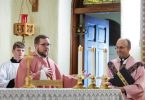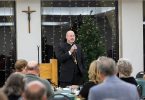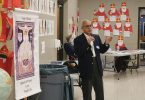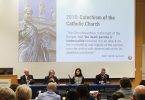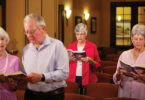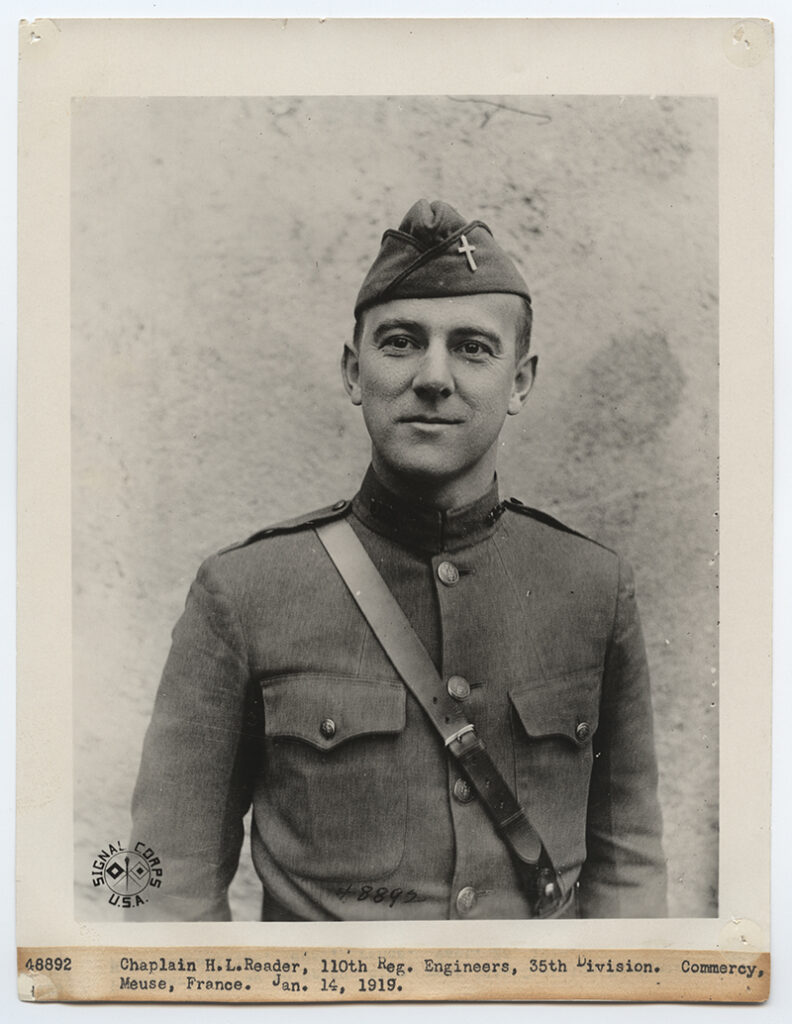
by Moira Cullings
moira.cullings@theleaven.org
KANSAS CITY, Mo. — While soldiers faced the horrors of combat during World War I, chaplains offered spiritual nourishment amid the violence.
“Their role was to provide spiritual guidance, consolation and inspiration to troops facing the horrors of modern warfare,” said Patricia Cecil, specialist curator for faith, religion and WWI.
“Chaplains offered religious services, provided medical care and counseling, and accompanied soldiers into combat zones,” she continued. “They brought courage, comfort and compassion to millions on and off the battlefield.”
Now, the National World War I Museum and Memorial in Kansas City, Missouri, is telling their stories.
Its “Sacred Service” exhibition opened on May 23 and is scheduled to run until September 2025. Admission is included in a general admission ticket.
It’s part of the museum’s “mission to share little-known human experiences of the war,” said Cecil.
“Most people are unaware of what chaplains did during the war, how religion impacted the conflict and the enduring effects of both in the present,” she said.

“Sacred Service” incorporates artifacts, film, first-person accounts and photographs. Visitors will view chaplains’ personal materials, like devotional items, diaries, uniforms and vestments.
“These compelling elements transport viewers to experience what chaplains endured as they trained, ministered in field hospitals and served on battlefields,” said Cecil.
One item on display is a New Testament given by a chaplain to a soldier during the war.
“We know from records that days later, the chaplain was killed on the battlefield,” said Cecil. “This gift, however, lives on, and the inscription on the interior communicates the connection between the two men.”
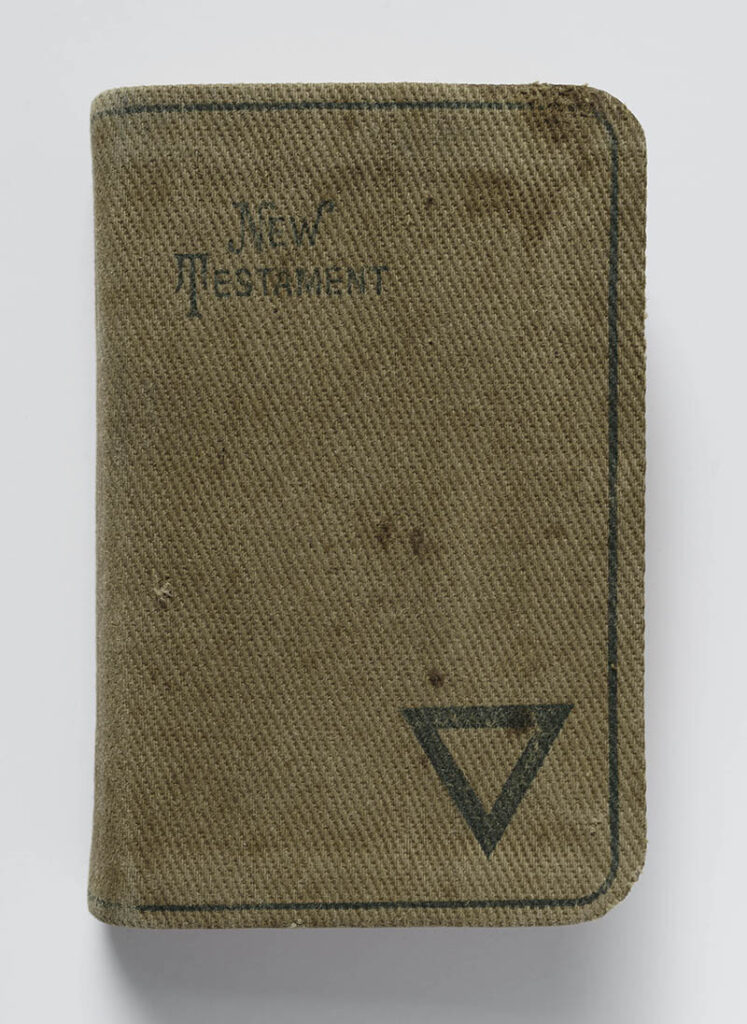
The exhibition also includes interactive 3D digital models that will allow visitors to scan a QR code and view objects at angles that would not be visible otherwise.
Visitors can learn about chaplains of diverse faiths, including Catholic priests, who would have celebrated Mass and provided the sacraments to soldiers in the war.
“Sacred Service” showcases portable Communion sets, which Cecil said look like suitcases with compartments for a chalice, pall, paten and other necessary items.
“Photographs in the exhibition illustrate how worship services took place wherever troops gathered: in trenches, bombed-out churches, caves, field hospitals, ships, forests or mountainsides,” she said.
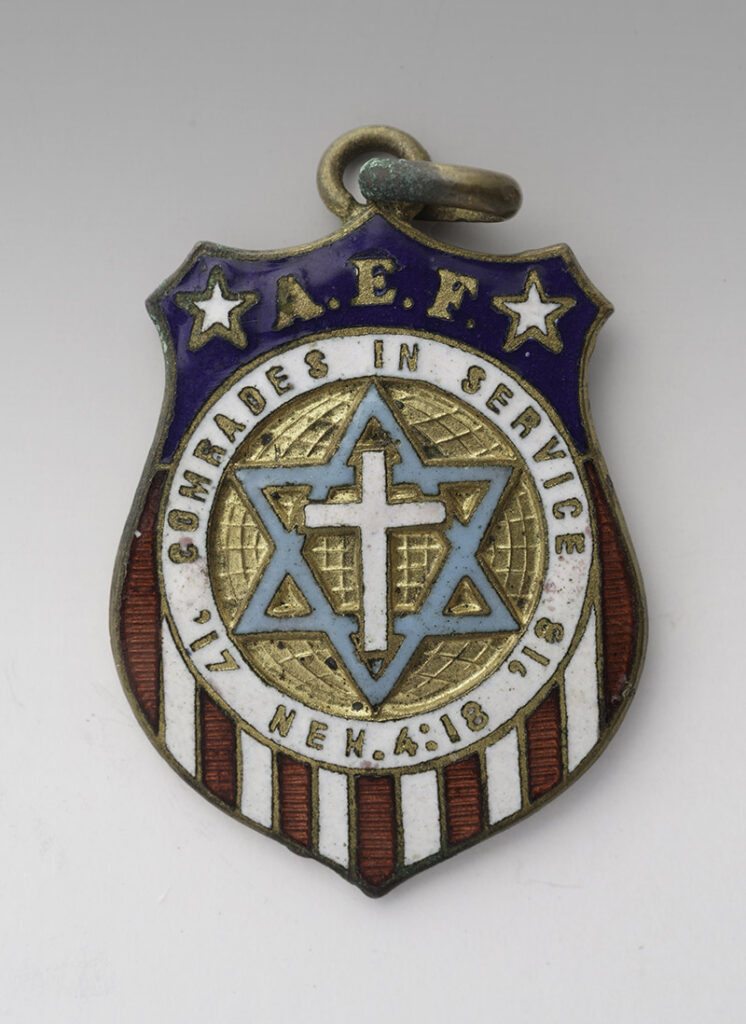
Chaplains got creative, improvising altars out of what was on hand, like overturned crates and sandbags, said Cecil.
The spiritual fruits were well worth it.
“The sacrament of holy Communion offered spiritual strength and hope to many Catholic and Christian service members serving far from home,” said Cecil, “and became deeply resonant for many who were so close to the possibility of death.”
Through the exhibition, visitors will see that during a time of immense fear and uncertainty, chaplains were a source of comfort.
“Their presence offered humanity during inhumane conditions and boosted morale,” said Cecil. “Chaplains comforted the wounded and dying, conducted burial rites and counseled men struggling with faith or the ethics of combat.”
General admission tickets for the National World War I Museum and Memorial can be purchased at the museum, or in advance by visiting the website here.


